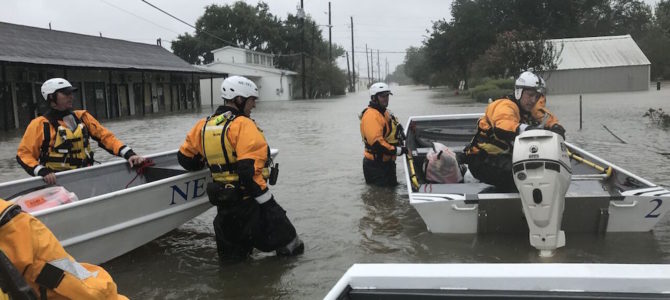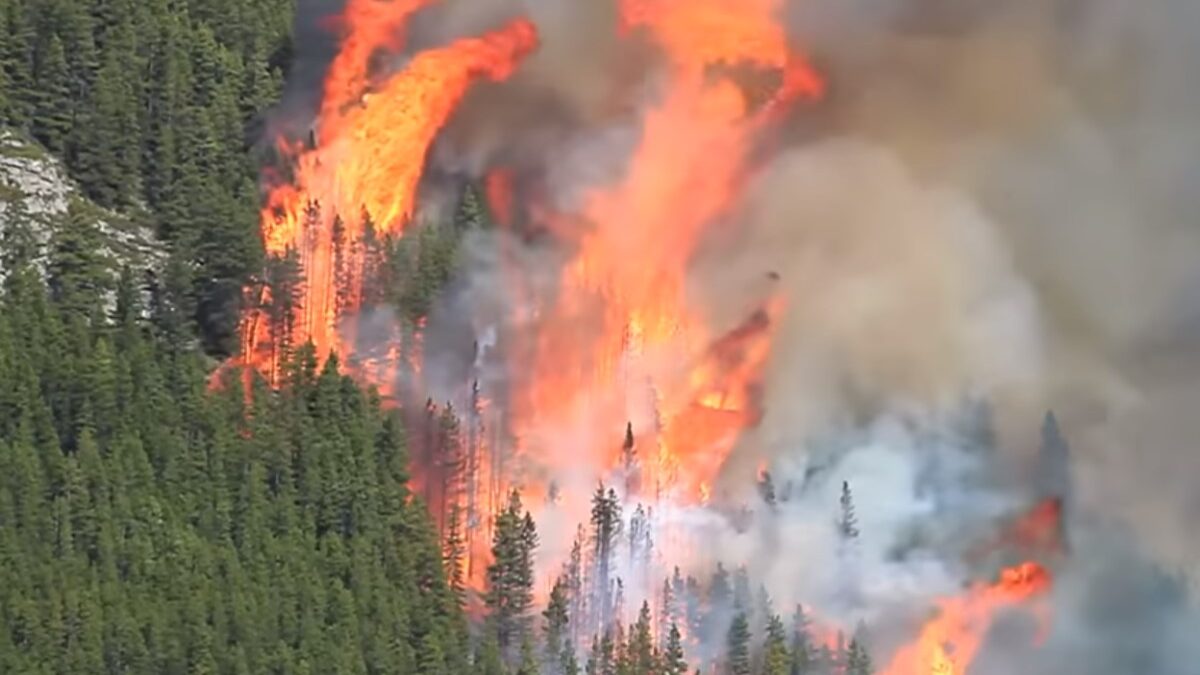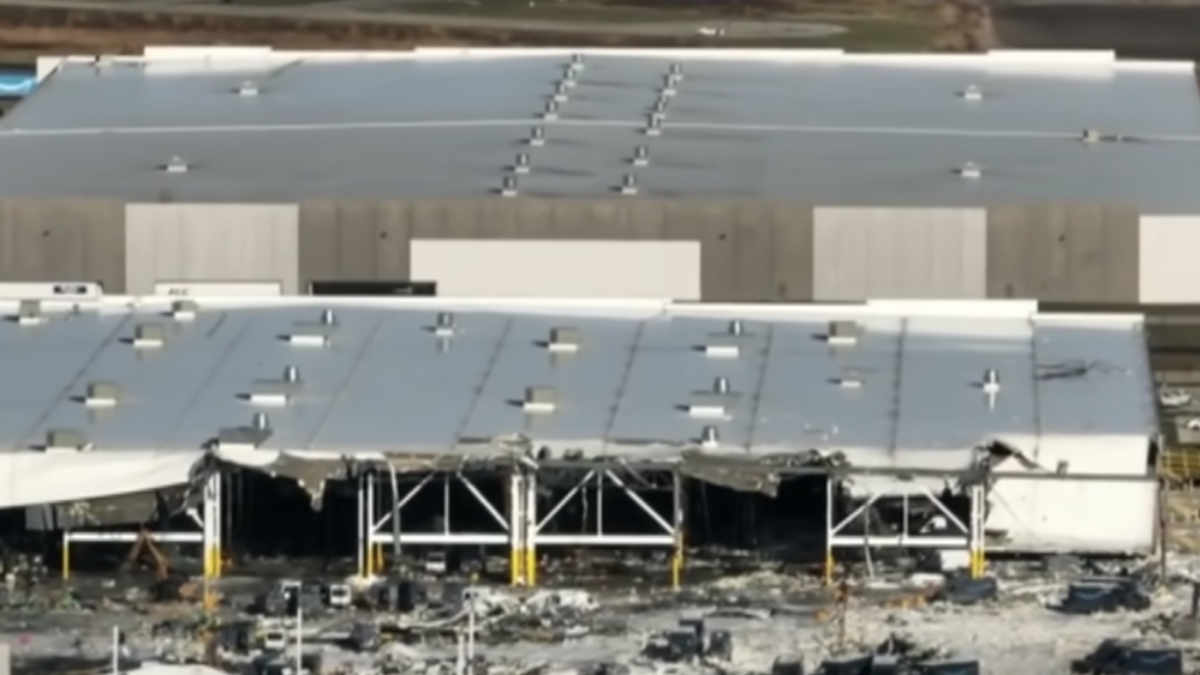
Five days after the storm, it isn’t over. Tuesday was an historic day in Houston, where rains from Hurricane Harvey officially broke a tropical system record for the contiguous United States. The National Weather Service reported the storm has now dumped nearly 50 inches of rainfall on the city in a matter of days. That’s about what Houston typically gets in an entire year.
Also on Tuesday, one of Houston’s two major reservoirs began spilling over for the first time ever. Addicks Reservoir, a 70-year-old dam overwhelmed by the extreme rainfall, began spilling water in the morning and officials predicted that Barker Reservoir, just to the south, would begin overflowing later in the day. The overflow from these reservoirs is expected to flow into downtown Houston, and could continue for weeks.
Peak overflow for Addicks is expected Thursday, when it will release 4,500 cubic feet of water per second in what officials are calling “uncontrolled releases.” Engineers warn that if the reservoirs fail, the flooding could be catastrophic, and residents in neighborhoods near the reservoirs have been asked to voluntarily evacuate. Some 3,000 homes and businesses are threatened, with thousands already inundated with as much as five feet of water. Fifty miles south of Houston, officials in Brazoria County issued an evacuation order after water from the storm-swollen Brazos River broke over the levee at Colombia Lakes.
Meanwhile, rescue operations are still underway throughout the metro area, where thousands of people are still stranded by floodwaters. As of this writing, 15 people have died as a result of the storm, including a Houston police officer, 34-year-veteran police officer Sgt. Steve Perez, who drowned when his patrol car was caught in high water Sunday morning. Tens of thousands are taking refuge in shelters as far away as San Antonio and Austin, and the waters are still rising. Many flood victims are at their breaking point.
Evacuation Isn’t An All-Or-Nothing Proposition
All of this raises an uncomfortable question: why weren’t more people urged to evacuate before the storm hit?
On Friday, ahead of the storm, Texas Gov. Greg Abbott advised residents of Corpus Christi and Houston to “strongly consider evacuating.” But local leaders in Houston and Harris County told residents to stay put. Harris County Judge Ed Emmett, a Republican who shares responsibility over Houston with the city’s Democratic mayor, Sylvester Turner, said on Monday that it would have been “nonsensical” to order the evacuation of four million people from the county before the storm hit. People would have “laughed at us or ignored it.”
Turner said the same at a press conference: “You literally cannot put 6.5 million people on the road. If you think the situation right now is bad, you give an order to evacuate, you are creating a nightmare.”
They’re probably right, but no one suggested this all-or-nothing scenario. The question isn’t whether all of Houston, the fourth largest city in America, should have been evacuated, but whether the city’s most vulnerable populations—the elderly, hospital patients, the disabled—could have been safely evacuated, perhaps with limited evacuations of flood-prone areas.
Turner and Emmett’s reluctance to issue evacuation orders likely stems from the city’s experience during Hurricane Rita in 2005, just weeks after Hurricane Katrina destroyed New Orleans. Local officials ordered an evacuation ahead of that storm—the largest evacuation in U.S. history—but catastrophe ensued as the roadways out of the city became choked with traffic and ground to a halt in 100-degree heat. More people died in the evacuation attempt than died from the hurricane—from traffic accidents, heat stroke, and a bus fire that killed more than 20 people.
However, the lesson from Rita isn’t that no evacuations should be ordered, but that a general evacuation shouldn’t be ordered. It’s not as though Houston officials couldn’t predict the city would receive massive rainfall when Harvey hit, and that some areas of the city, which sits on a low-lying coastal plain, would be flooded. Indeed, last year the Texas Tribune and ProPublica produced detailed reports based on scientific models of how the next major storm might affect—and flood—the Houston area. What’s more, the experience of Rita prompted revised and expanded evacuation plans that Houston’s civic leaders could have used, but didn’t.
Houston Is Rising To The Challenge. What of Next Time?
During President Trump’s visit to Texas on Tuesday, he said he hoped that the response to Harvey would be seen as a textbook case. “We want to do it better than ever before. We want to be looked at in five years, in ten years from now as, this is the way to do it.”
So far, the state and local response to Harvey has been impressive. The National Guard, U.S. Coast Guard, local emergency responders, and a massive flotilla of private boat operators have rescued thousands stranded throughout the Houston area. On Monday, Abbott activated the entire Texas National Guard, about 12,000 guardsmen. In Houston, authorities asked stranded people to hang sheets and towels out their windows so rescuers could identify them.
Some of the stories and images coming out of Houston testify to the heroism and selflessness of ordinary Americans. Members of the volunteer Cajun Navy resuscitated a 73-year-old woman they found floating lifeless in the water. In a nursing home in Dickinson, Texas, senior citizens, many suffering from dementia, were trapped in floodwaters up to their waists. The owners of the home couldn’t get through to emergency services so they tweeted out a picture, asking for help. Within hours, the residents had been rescued. One man turned his two mattress stores into temporary shelters for evacuees, posting a video on Facebook and saying, “We’re Texans, we’ll help each other as we’ve done for two hundred years.”
In fact, by all accounts the response appears to stand in stark contrast to Hurricane Katrina in 2005, during which officials in New Orleans were unable to maintain order and 682 people died amid widespread looting and violence. Same for Tropical Storm Sandy in New York, where hundreds of public housing tenants were trapped for more than a week without power, and 43 people died.
But as the storm drags on in Houston and the waters rise, some questions remain: why didn’t local political leaders order limited evacuations? Why do they now persist with the false dichotomy of total evacuation versus zero evacuation? And when the floodwaters recede and the rebuilding begins, will Houstonians hold them accountable?









